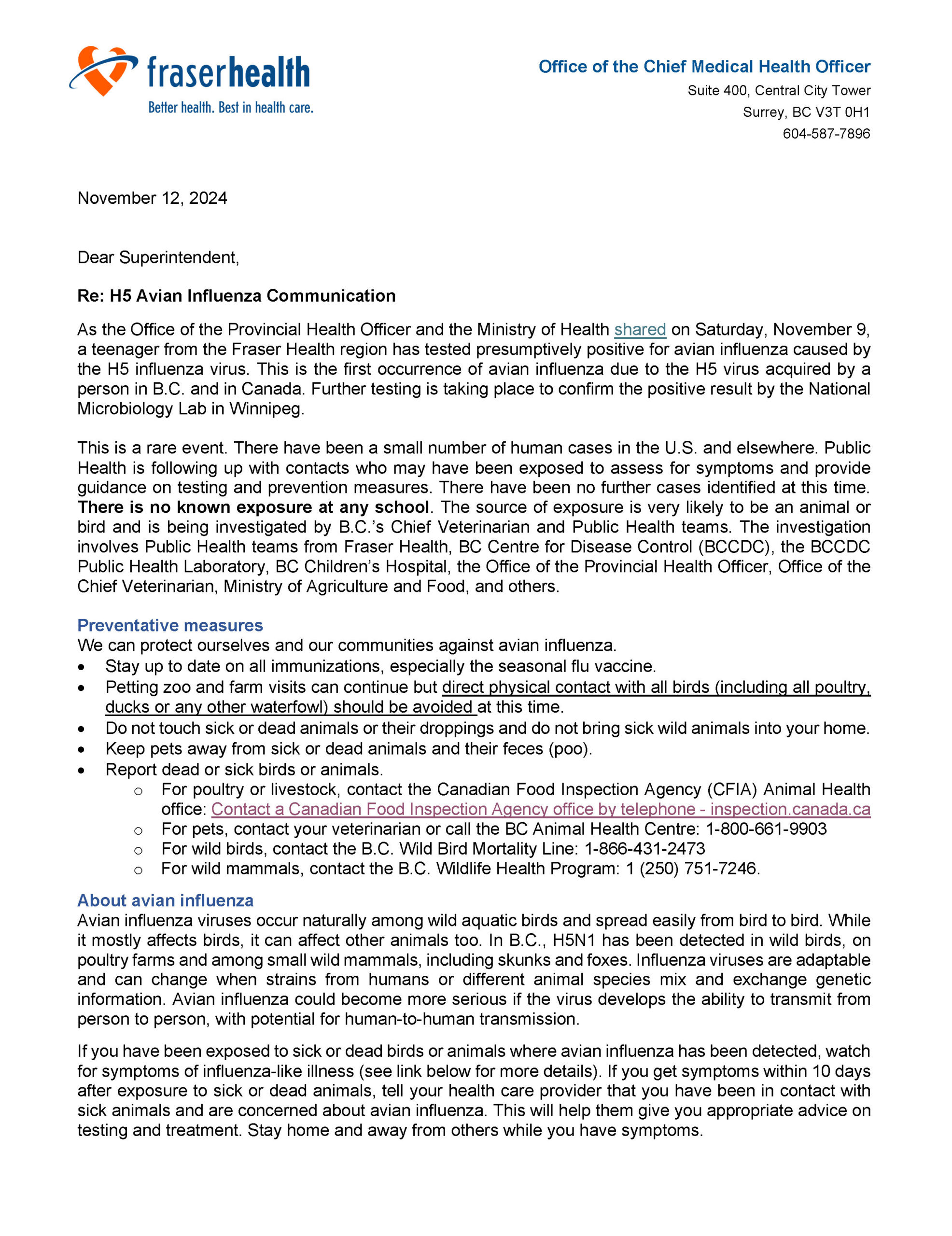Communicable Disease Activity at School
St. Patrick’s School is committed to the health and safety of our students and staff. As such, we follow the provincial guidelines for communicable disease protocols.
Communicable diseases circulate in our communities. As long as cases occur within our communities, K to12 students and staff members may be affected. Schools have communicable disease prevention measures in place and will contact public health if they have concerns about communicable disease transmission within schools and require additional support.
Prevention measures
Prevention measures are in place to reduce the spread of communicable diseases. These include effective personal practices like health awareness, staying home when sick and regular hand cleaning. All students and staff should:
Health Awareness
Health awareness reduces the likelihood of a person coming to school when they are sick. This includes checking regularly for symptoms of illness to make sure you or your child don’t come to school while sick.
Students, staff and other adults should follow public health guidance and the recommendations of their health care provider when they are sick. Health information is also available from Healthlink BC or by calling 8-1-1.
Students and staff who become sick at school
If a student or staff member develops symptoms at school:
-
Make arrangements for student/staff to go home as soon as possible.
-
Schools will have an area where people are separated from their classmates or colleagues and can wait comfortably
-
Younger children will be supervised when separated
-
Students may have their temperature taken
-
The student’s parent or guardian will be contacted and asked to have their child picked up as soon as possible, especially if they have a fever or they vomit
-
Staff will be asked to go home as soon as possible
-
Custodial staff will clean and disinfect the areas the person used
-
The person should stay home until they feel well enough to return to regular activities. Most people can return to school when their symptoms have improved and they feel well enough to participate in regular activities.
PLEASE KEEP YOUR CHILD HOME IF THEY ARE DISPLAYING SYMPTOMS OF ILLNESS.
If they are going to be away, fill out an absentee form online.
Ventilation
-
Schools ensure heating, ventilation and air conditioning (HVAC) systems are designed, operated and maintained to Occupational Health and Safety and WorkSafeBC standards.
-
Expert guidance is being applied to improve indoor air quality and reduce the risk of virus transmission.
Cleaning and disinfecting schools
Public health orders
Public health orders may be put in place for the province, entire regions or certain communities. This can include schools, or specific settings or activities.
Public health orders are implemented at the discretion of the local Medical Health Officer or the Provincial Health Officer in response to the broader risk of communicable disease transmission in the community.
School visitors
Schools can follow normal practices for welcoming visitors and the community use of schools. Visitors and community groups using school premises should follow applicable communicable disease presentation measures, including staying at home when sick. After-hours use of school facilities is determined by school districts, independent school authorities or schools.
Mental health
Resources on Mental Health for K-12 are available on the erase website.
Source: https://www2.gov.bc.ca/gov/content/education-training/k-12/communicable-disease-prevention-in-k-12-schools


